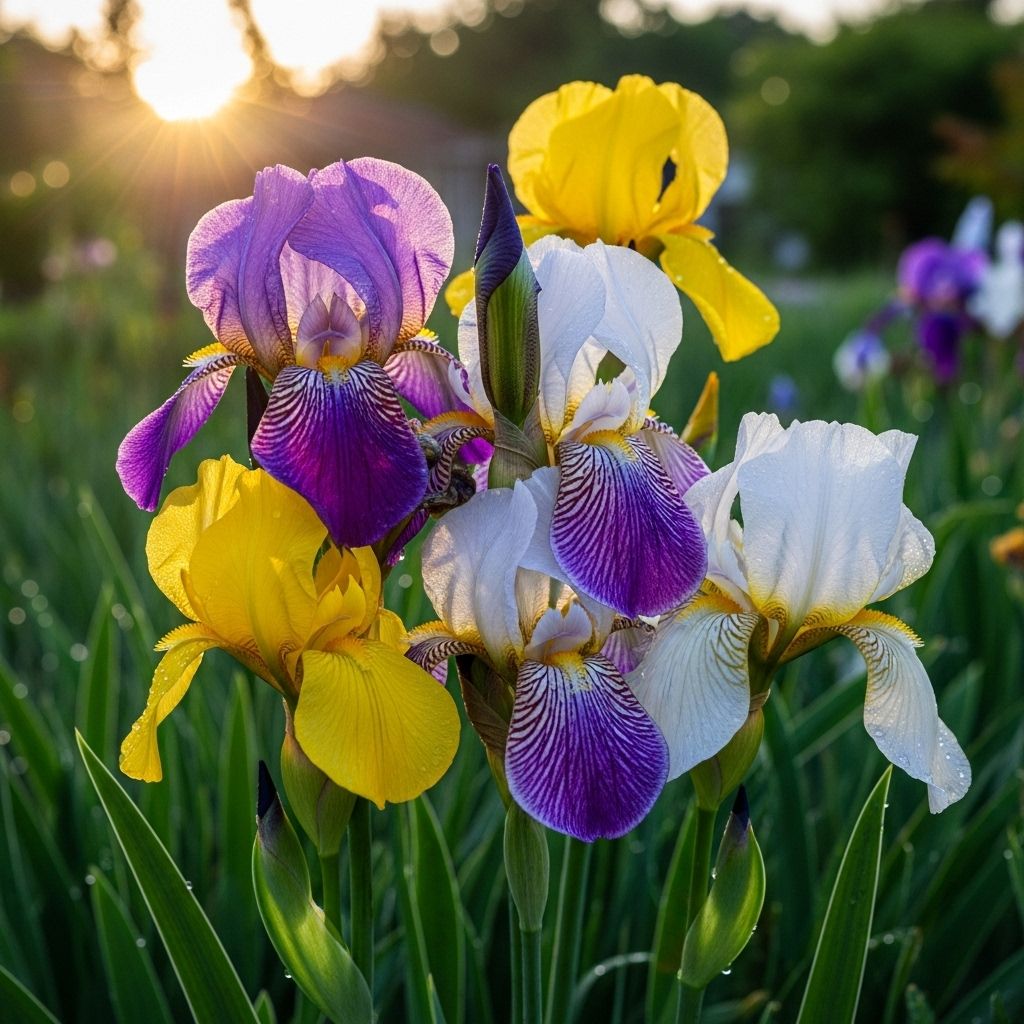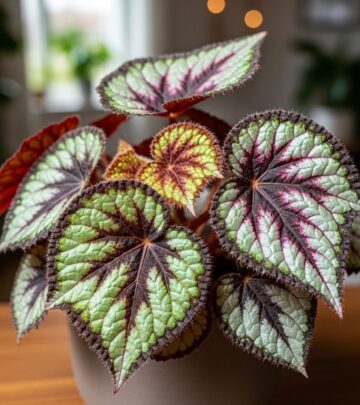Perennial Irises: 7 Essential Care Tips For Yearly Blooms
Unlock the secrets of iris flowers—discover if they're annuals or perennials, how to care for them, and how to enjoy their stunning blooms year after year.

Image: HearthJunction Design Team
Are Iris Flowers Annuals or Perennials?
Iris flowers are a beloved staple in gardens across the world, known for their vibrant colors, dramatic forms, and ease of care. But a common question among newcomers and even seasoned gardeners is: Are irises annuals or perennials? In this comprehensive guide, we’ll explore the true lifespan of iris plants, how to care for them, and how to get the most from these spectacular blooms year after year.
What Is the Iris Flower?
The iris is a genus of flowering plants in the family Iridaceae, revered for its showy flowers that come in a rainbow of colors. These hardy plants have been cultivated for centuries and are found worldwide, with origins tracing back as far as Ancient Egypt.
- Common Types: Bearded iris, Siberian iris, Japanese iris, and Louisiana iris.
- Habitat: Native primarily to temperate regions in the Northern Hemisphere.
- Family: Iridaceae, named after the Greek goddess Iris, symbolizing the rainbow.
The Key Question: Are Irises Annual or Perennial?
Irises are perennial plants. This means they regrow every year, returning each season with fresh foliage and blooms. Once established, an iris plant can thrive and flower for many years with minimal intervention .
What Does “Perennial” Mean?
- Perennials are plants that live for more than two years. They typically go dormant in winter and return in spring.
- Unlike annuals, which complete their life cycle in one growing season, perennials come back from their root systems each year.
Why the Confusion?
Some gardeners may mistake irises as biannual or even as annuals due to inconsistent blooming or the appearance of gaps in flowering. However, these issues are usually related to care, overcrowding, environmental factors, or the specific iris variety, not the plant’s true lifespan .
Understanding Perennial vs. Annual vs. Biennial
| Type | Lifespan | Typical Iris Example |
|---|---|---|
| Annual | Completes entire lifecycle in one season, then dies. | Rare in irises |
| Biennial | Lives for two years; flowers the second year, then dies. | Generally not applicable to irises |
| Perennial | Lives multiple years, blooms annually after maturity | Most iris species |
Why Irises Are Perennials
- Irises form extensive root systems (often as rhizomes or bulbs) that survive underground in winter, allowing new growth each spring.
- With proper care, iris plants can bloom reliably every year for decades.
- Division and propagation can extend the longevity of iris beds indefinitely, making them ideal for ornamental gardens .
Popular Iris Types and Their Growth Habits
- Bearded Iris (Iris germanica): Most common garden iris; perennial, grows from thick rhizomes. Known for showy “beards.”
- Siberian Iris (Iris sibirica): Clump-forming perennials thriving in cool climates with grassy foliage.
- Japanese Iris (Iris ensata): Moisture-loving perennials suited to pond margins or rain gardens.
- Dutch Iris (Iris x hollandica): Typically grown from bulbs, these irises are also perennial though sometimes treated as annuals in certain climates.
- Crested & Dwarf Irises: Many miniature species also exhibit perennial growth habits.
How Long Do Irises Live?
With proper care, an iris clump can remain vigorous and productive for 10 to 20 years or longer. Periodic division rejuvenates old clumps and ensures robust blooms year after year .
- Bearded Iris: 3–5 years before needing division.
- Siberian/Japanese Iris: 4–6 years before thinning is beneficial.
- Without division, overcrowding can reduce flowering.
Why Do Some Irises Seem to Stop Blooming?
Irises should bloom every year, but several factors can lead to poor or absent flowering :
- Overcrowding: Rhizomes or roots become packed, competing for moisture and nutrients.
- Poor sunlight: Irises need at least 6 hours of direct sun for optimal blooming.
- Nutrient depletion: Old beds may lack fertility; amending with compost or fertilizer helps.
- Incorrect planting depth: Rhizomes buried too deeply may not flower well.
- Disease or pests: Rot, borers, or fungal problems can affect vigor and bloom.
How to Ensure Annual Blooms From Your Irises
Follow these tips to get the best out of your iris plants:
- Plant in full sun (at least 6 hours daily) for best blooms.
- Choose well-drained soil. Amend with compost or sand if necessary.
- Don’t plant rhizomes too deep: Rhizome tops should be just at or slightly below soil surface.
- Water deeply and infrequently—avoid standing water or “wet feet.”
- Fertilize sparingly—a low-nitrogen, balanced fertilizer in spring is ideal.
- Divide every 3–5 years (bearded) or 4–6 years (Siberian/Japanese) to prevent overcrowding.
- Remove spent stalks and dead leaves to reduce disease and keep beds tidy.
Dividing and Propagating Irises
Division is essential for maintaining healthy, flowering irises. Here’s how:
- Dig up mature clumps after flowering (late summer or early fall).
- Trim leaves to 6–8 inches to reduce water loss.
- Separate healthy rhizomes—look for firm, unblemished sections with visible roots and fans.
- Discard old, woody, or diseased rhizomes.
- Replant new divisions 12–18 inches apart with rhizome tops just below the surface.
This process rejuvenates the plant and prevents crowding and declining bloom.
Seasonal Iris Care Guide
- Spring: Remove mulch, side-dress with compost or balanced fertilizer, and start regular watering as shoots emerge.
- Summer: Deadhead spent blooms, water during dry spells, and monitor for insects.
- Fall: Divide if needed; add a thin layer of mulch for winter protection.
- Winter: Cut back dead foliage and keep iris beds tidy; avoid heavy mulching that can cause rot .
Companion Planting With Irises
Irises pair beautifully with a variety of other perennials and annuals. Some great neighbors include:
- Peonies
- Daylilies
- Alliums
- Salvias
- Catmint (Nepeta)
- Ornamental grasses
These combinations can extend your bloom season and provide visual interest throughout the year .
Common Misconceptions About Iris Lifespan
- Misconception: Irises are biennials or only bloom every other year.
- Fact: Irises are true perennials and should bloom annually when healthy .
- Misconception: All iris types are hardy everywhere.
- Fact: Some species prefer specific zones. Most thrive in zones 3–8, while some tolerate zones 8–10 .
Benefits of Growing Perennial Irises
- Low maintenance once established
- Long-lived and return each year
- Wide variety of colors and types
- Deer and rabbit resistant
- Excellent cut flower and pollinator appeal
Annuals vs. Perennials in the Flower Garden
| Attribute | Annuals | Perennials (like Iris) |
|---|---|---|
| Lifespan | 1 season | Many years |
| Bloom Time | Long season (often whole summer) | Usually shorter window, but returns |
| Maintenance | Replant annually | Divide every few years |
| Budget | Must purchase each year | One-time investment |
Planting Irises for Success
- Select a spot with at least 6 hours of direct sunlight.
- Prepare a well-drained bed with compost or organic material.
- Plant rhizomes just below the surface, roots spread out horizontally.
- Water in well but avoid soggy conditions.
- Space plants 12–24 inches apart for good airflow.
Frequently Asked Questions (FAQs)
Q: Are all irises perennials?
A: Nearly all iris species grown in gardens are perennials. Some bulbous types may be treated as annuals in certain climates, but with proper care, most will return each year.
Q: Why does my iris only bloom every other year?
A: If irises skip years of bloom, it’s usually due to overcrowding, lack of sunlight, or soil problems. Dividing and replanting healthy rhizomes almost always restores annual flowering .
Q: Can I grow irises in pots?
A: Yes! Use a well-draining potting mix in a container with good drainage holes. Bearded irises especially adapt well to pots, with care taken not to bury rhizomes too deeply.
Q: When should I divide my irises?
A: Divide irises after they finish flowering, typically every 3–5 years for bearded types and 4–6 years for Siberian or Japanese irises.
Q: Do irises survive winter?
A: Most garden irises are frost-hardy and survive winter easily, especially if given a light mulch in late fall .
Q: How do I get my irises to bloom more?
A: Ensure full sun, good soil drainage, correct planting depth, and regular division. Feeding with a low-nitrogen fertilizer in spring also helps.
Conclusion: The Joy of Perennial Iris Flowers
If you want a reliable, long-lived, and beautiful addition to your flower garden, irises are an outstanding choice. As true perennials, they will delight you with vibrant blooms year after year, with very little required beyond the occasional division and seasonal maintenance. Understanding their needs ensures that your irises will continue to be a highlight of your garden for generations to come.
References
Read full bio of medha deb












